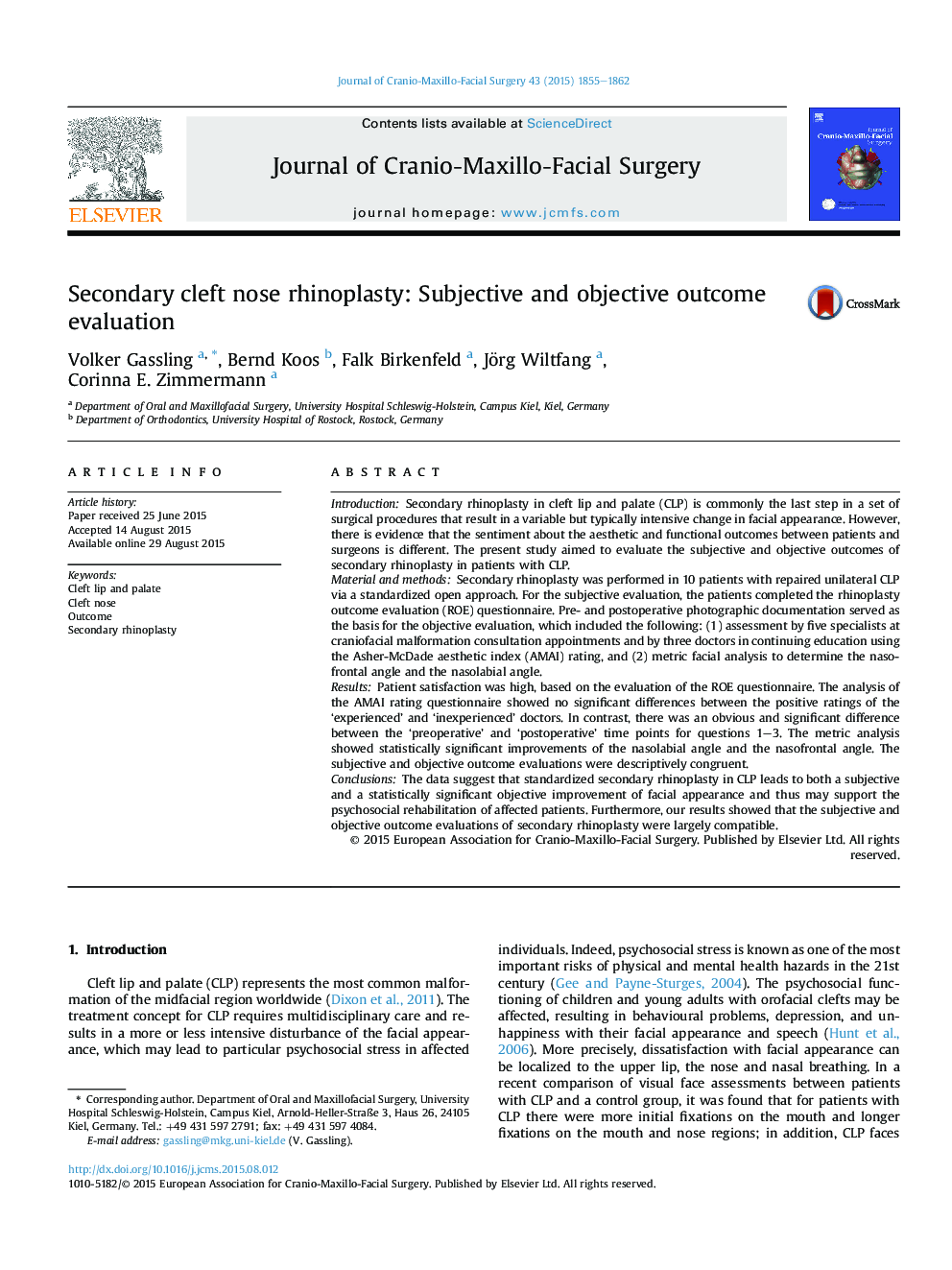| Article ID | Journal | Published Year | Pages | File Type |
|---|---|---|---|---|
| 3143056 | Journal of Cranio-Maxillofacial Surgery | 2015 | 8 Pages |
IntroductionSecondary rhinoplasty in cleft lip and palate (CLP) is commonly the last step in a set of surgical procedures that result in a variable but typically intensive change in facial appearance. However, there is evidence that the sentiment about the aesthetic and functional outcomes between patients and surgeons is different. The present study aimed to evaluate the subjective and objective outcomes of secondary rhinoplasty in patients with CLP.Material and methodsSecondary rhinoplasty was performed in 10 patients with repaired unilateral CLP via a standardized open approach. For the subjective evaluation, the patients completed the rhinoplasty outcome evaluation (ROE) questionnaire. Pre- and postoperative photographic documentation served as the basis for the objective evaluation, which included the following: (1) assessment by five specialists at craniofacial malformation consultation appointments and by three doctors in continuing education using the Asher-McDade aesthetic index (AMAI) rating, and (2) metric facial analysis to determine the nasofrontal angle and the nasolabial angle.ResultsPatient satisfaction was high, based on the evaluation of the ROE questionnaire. The analysis of the AMAI rating questionnaire showed no significant differences between the positive ratings of the ‘experienced’ and ‘inexperienced’ doctors. In contrast, there was an obvious and significant difference between the ‘preoperative’ and ‘postoperative’ time points for questions 1–3. The metric analysis showed statistically significant improvements of the nasolabial angle and the nasofrontal angle. The subjective and objective outcome evaluations were descriptively congruent.ConclusionsThe data suggest that standardized secondary rhinoplasty in CLP leads to both a subjective and a statistically significant objective improvement of facial appearance and thus may support the psychosocial rehabilitation of affected patients. Furthermore, our results showed that the subjective and objective outcome evaluations of secondary rhinoplasty were largely compatible.
